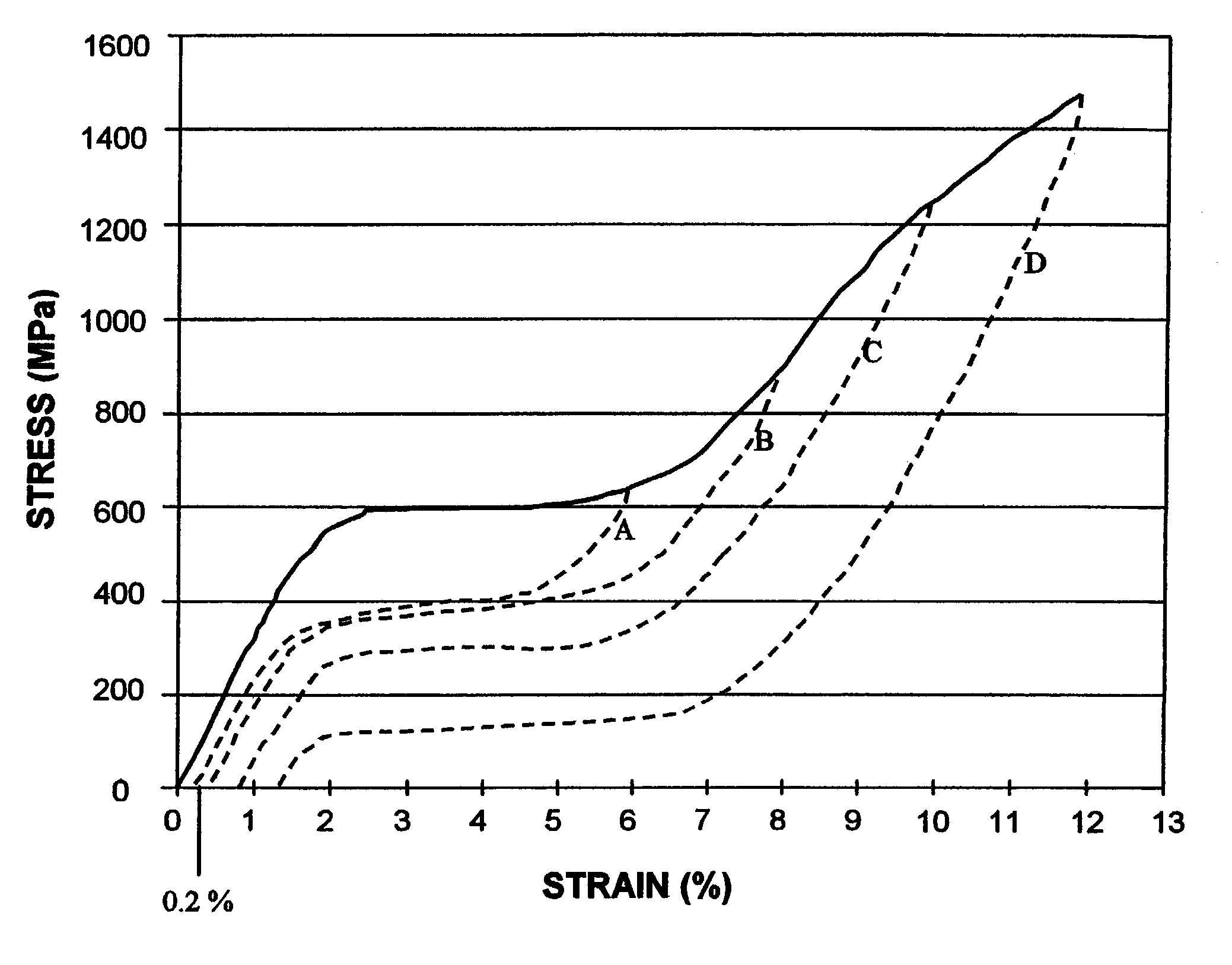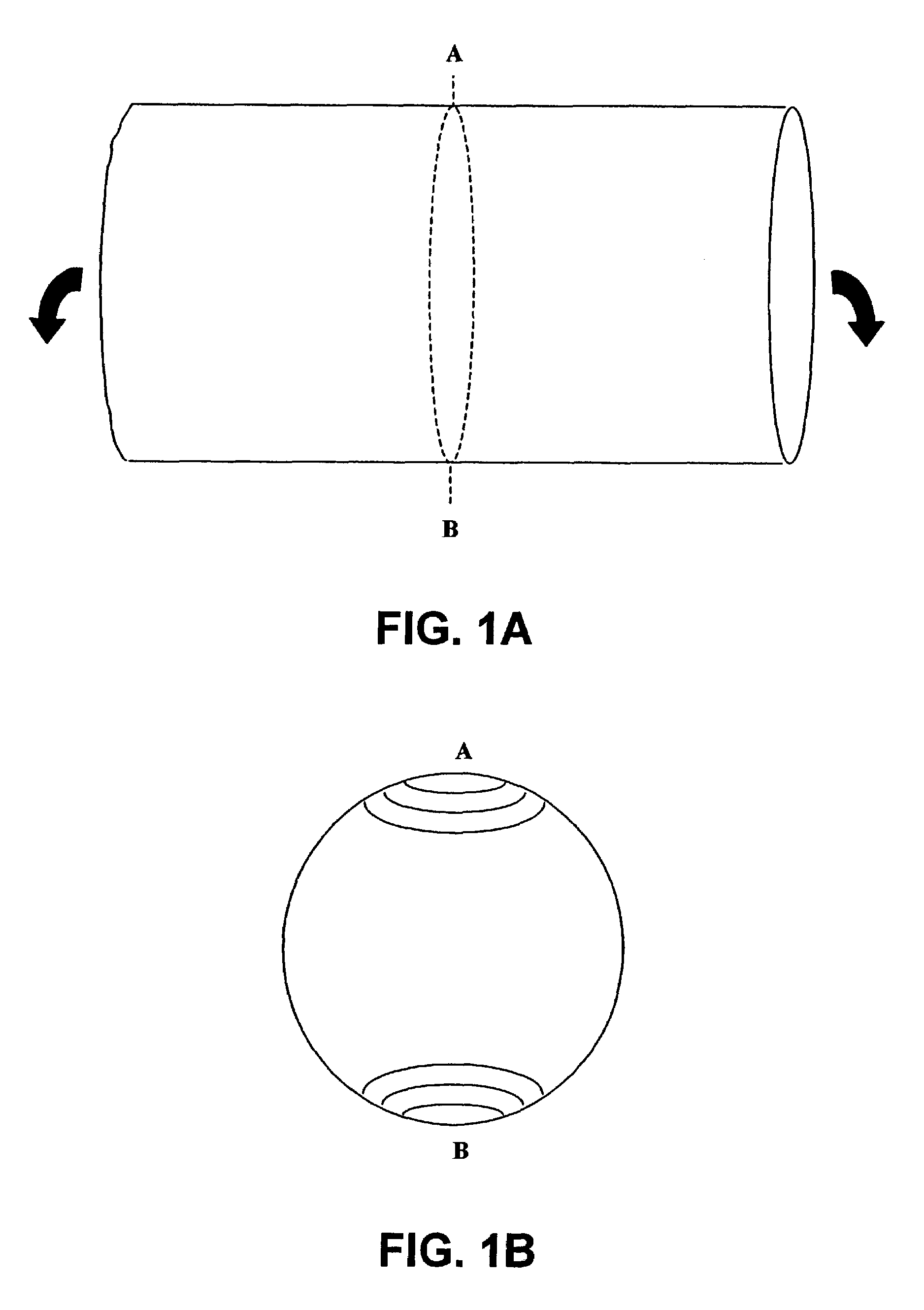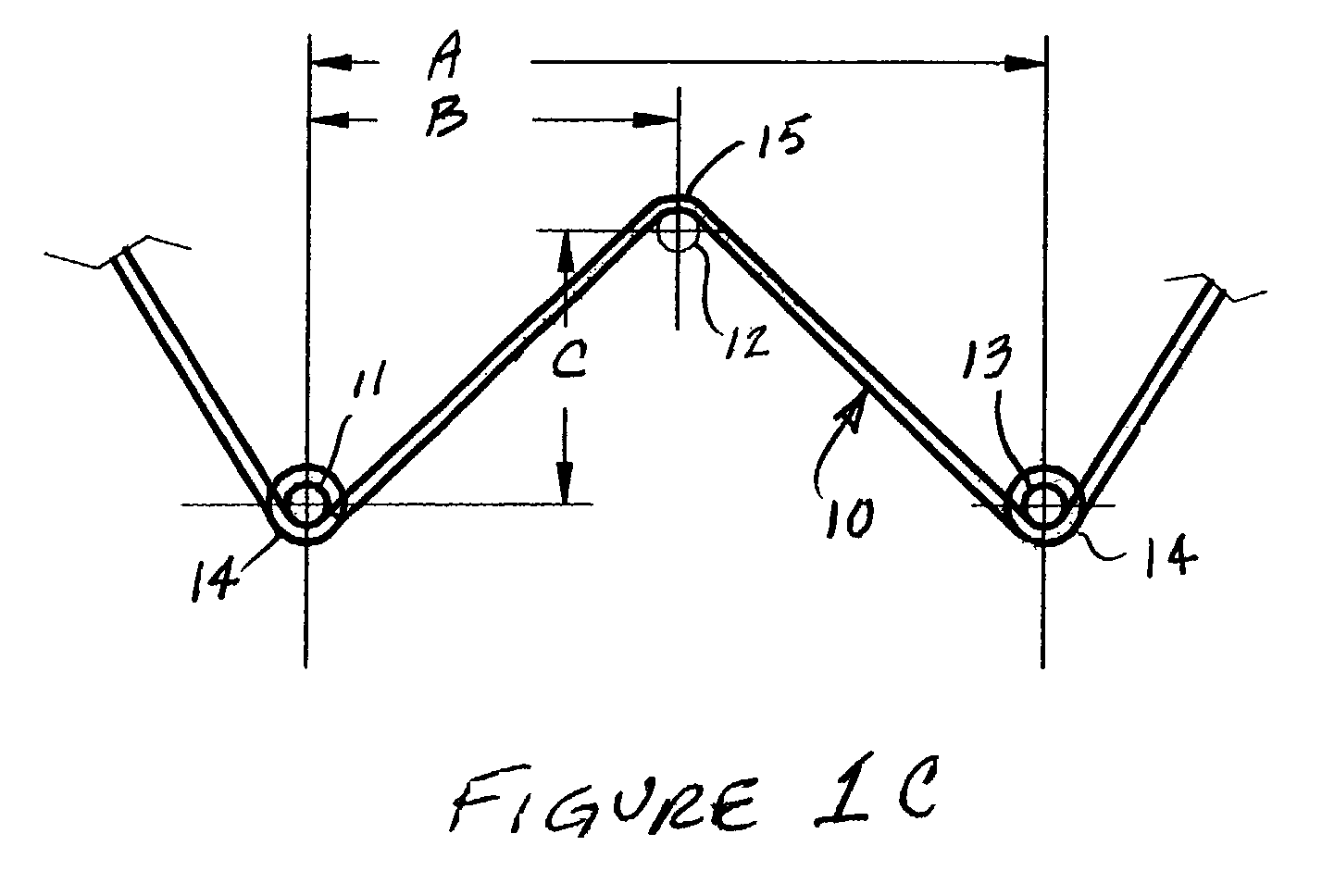Shape memory alloy articles with improved fatigue performance and methods therefor
a memory alloy and fatigue resistance technology, applied in the field of medical articles with improved fatigue resistance, can solve the problems of limiting the design of medical devices such as stents and stent-grafts, and achieve the effects of improving fatigue performance, improving fatigue performance, and being more fatigue resistan
- Summary
- Abstract
- Description
- Claims
- Application Information
AI Technical Summary
Benefits of technology
Problems solved by technology
Method used
Image
Examples
example 1
[0053]Axial fatigue tests were conducted using superelastic nitinol wire samples subjected to different tensile pre-strain conditions. The nitinol wire (Fort Wayne Metals, Fort Wayne, Ind., nominal diameter 0.305 mm) utilized for these tests was electropolished to a diameter of 0.300 mm and heat treated in air to obtain a straight configuration and to impart superelastic behavior at 37° C. (Af<37° C.) with a permanent set of less than 0.20% when loaded to 6% strain and unloaded at 37° C.
[0054]An Instron servohydraulic test machine (Canton, Mass., model no. 8841) was used for the axial fatigue testing. The testing was performed in an air thermal chamber set at 37° C. (±1° C.). Wavemaker software (Fast Track 2, Wavemaker Editor / Runtime, version 7.0.0, provided by Instron) was used to generate and execute the axial fatigue tests using a displacement controlled sine waveform. Test specimen gauge length was 100 mm, held with flat-faced grips (Instron PN 2716-016). Five specimens were pul...
example 2
[0060]Flexural fatigue tests were conducted using superelastic nitinol wire (Fort Wayne Metals, Fort Wayne, Ind., nominal diameter 0.323 mm) samples subjected to different tensile pre-strain conditions. The nitinol wire used for these tests was electropolished to a diameter of 0.321 mm.
[0061]Thirty wire test specimens were formed into the shape described in FIG. 1C, by winding the wire around the 0.79 mm diameter stainless steel pins 11, 12 and 13 of the heat treatment fixture, as shown in FIG. 1C. All test specimens were heat treated in air while on the fixture to set the test sample geometry configuration and to impart superelastic behavior at 37° C. (Af11 and 13 (center-to-center) was 13.72 mm, while dimension “B” was half of dimension “A”. Dimension “C” was 5.08 mm. The support loops 14 at the ends of each sample 10 were of an inside diameter that conforms to the diameter of pins 11 and 13. The apex 15 of each test specimen 10 was formed to a radius (at the inside radius of the ...
PUM
| Property | Measurement | Unit |
|---|---|---|
| tensile strain | aaaaa | aaaaa |
| non-recoverable tensile strain | aaaaa | aaaaa |
| tensile strain | aaaaa | aaaaa |
Abstract
Description
Claims
Application Information
 Login to View More
Login to View More - R&D
- Intellectual Property
- Life Sciences
- Materials
- Tech Scout
- Unparalleled Data Quality
- Higher Quality Content
- 60% Fewer Hallucinations
Browse by: Latest US Patents, China's latest patents, Technical Efficacy Thesaurus, Application Domain, Technology Topic, Popular Technical Reports.
© 2025 PatSnap. All rights reserved.Legal|Privacy policy|Modern Slavery Act Transparency Statement|Sitemap|About US| Contact US: help@patsnap.com



